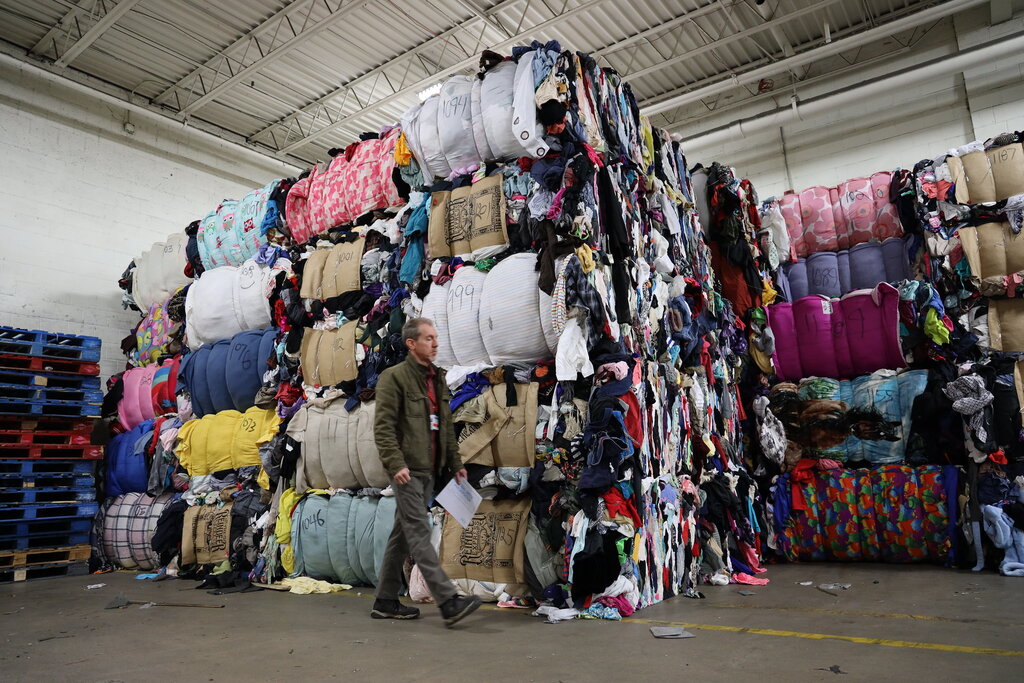Textile manufacturing produces 10% of global greenhouse gas emissions and pollutes local ecosystems. Fast fashion companies can use recycled and low-impact materials, reducing textile waste and improving sustainability.
—
In 2016, Mark Angelo released the documentary Riverblue to increase society’s awareness of fashion-derived pollution. The film highlights runoff contamination and its effects on local communities and aquatic ecosystems. Textile manufacturing practices also produce atmospheric and landfill pollution, compromising the industry’s sustainability.
The fast-fashion industry contributes to environmental degradation in a significant way. Companies respond to affordable clothing demands and modern trends by producing articles quickly with synthetic materials. Environmentalists have evaluated the pollution challenges associated with textile production and disposal, developing waste reduction techniques.
What Is Textile Waste and Why Does It Matter?
Before exploring the waste reduction methods, we must assess the issues related to textile manufacturing. Textile waste signifies pollution deriving from clothes, shoes, accessories, towels, sheets, curtains and more. Adverse ecological impacts occur from material production processes and disposal methods.
Fast-fashion textiles contain synthetic materials like polyester, helping companies manufacture clothes cost-effectively. The fabrics are forms of plastic, deriving from petroleum, a fossil fuel. During combustion in textile manufacturing, the fuel source releases greenhouse gases into the atmosphere and environment.
The air pollutants change the atmosphere’s composition, limiting its ability to maintain life-sufficient temperatures. Naturally, Earth absorbs solar radiation and produces heat. Then, it uses the heat to warm its surface and sustain the global ecosystem.
After the planet reaches a specific temperature, the atmosphere gathers excess energy and sends it to space. When greenhouse gases invade the atmosphere, they increase its light-to-heat conversion rate. They also trap extra energy in the environment, filtering it back through the heat production process.
Over time, the emissions raise Earth’s temperature, producing degrading ecological effects. The fast-fashion industry produces nearly 10% of global greenhouse gas emissions every year. It also creates surface-level pollution from facility and landfill runoff.
When textile manufacturing companies illegally dump their waste into local rivers and streams, they contribute to microplastic pollution. The waste also derives from landfills, where plastic fabrics degrade over time into minuscule beads. When it rains, stormwater carries the microplastics to the ocean, producing adverse aquatic effects.
Additional marine pollution comes from outsourcing our textile recycling and waste. The US ships a significant quantity of clothes overseas for end-of-life processing. The foreign dumping sites leak toxins into local water supplies and pollute the surface.
There are various methods the industry and consumers can engage in, reducing surface-level and atmospheric waste. When we regulate and minimise textile-related pollution, we can improve environmental conditions and preserve natural resources and the ecosystem’s stability.
You might also like: 7 Fast Fashion Companies Responsible for Environmental Pollution
Waste-Reduction Methods
Fast fashion companies can minimise textile manufacturing waste by sourcing a portion of their products from second-hand stores. They can hire designated article collectors, thereby increasing job opportunities in the industry. Selling thrifted goods reduces the demand for manufacturing processes, limiting synthetic material emissions.
Relying on second-hand goods also minimises landfill waste and microplastic runoff. Sustainable stores additionally increase sales for fashion companies, meeting eco-consumer demands. GreenPrint conducted a consumer survey, finding 78% of respondents are more inclined to purchase eco-friendly products.
Some companies are also reducing textile waste, taking responsibility for their clothes throughout their life cycles. They may provide drop-off boxes for consumers’ old articles, repurposing the fabric for new clothes. Recycled materials additionally minimise atmospheric and surface-level waste, freeing up landfill space.
Moreover, fast fashion companies can reduce adverse ecological effects by producing clothes from sustainable materials. Many eco-friendly textile manufacturing facilities are using bamboo to create low-emission, low-waste clothes. Farmers can grow the plant with minimal water, fertilisers and pesticides, reducing adverse runoff effects.
Bamboo textiles will likely help reduce the demand for synthetic fibres, reducing plastic pollution. Over time, adopting sustainable manufacturing methods can aid companies and consumers shrink their carbon footprints.
Benefits of Improving the Fast Fashion Industry’s Sustainability
When companies produce clothes from recycled materials or resell second-hand items, they support the circular economy. We have enough textiles on the planet to clothe each individual. Sustainable manufacturing processes also support carbon-neutrality goals, minimising atmospheric degradation and preventing additional climate change effects.
Featured image by: MPCA Photos/Flickr


















